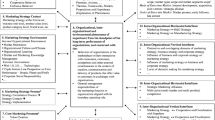Abstract
Commonly viewed as a cost center from an operations perspective, product returns have the potential to strongly influence operating margins and business profitability, thus constituting a risk for online retailers. This work addresses the problem of how to assess and manage product returns costs using a risk analysis methodology. Online product returns are seen as a random phenomenon that fluctuates in severity over time, threatening the profitability of the online store. Therefore, the starting point is that this risk can be modeled as a future random stream of payments. Given one or many future time periods, we aim to assess and manage this risk by answering two important questions: (1) Pricing—or what dollar amount factored on top of the current price of goods sold online would cover the cost of product returns, and (2) Reserving—or how much capital does an online retailer need to reserve at the beginning of each period to cover the cost of online product returns. We develop our analysis for one period (a month) by a closed formula model, and for multi-period (a year) by a dynamic simulation model. Risk measurements are executed in both cases to answer the two main questions above. We exemplify this methodology using an anonymized archival database of actual purchase and return history provided by a large size US women’s apparel online retailer.




Similar content being viewed by others
References
Anderson E, Hansen K, Simester D (2009) The option value of returns: theory and empirical evidence. Market Sci 28:405–423
Che Y (1996) Customer return policies for experience goods. J Indus Econ XLIV:17–24
Chen J, Bell P (2009) The impact of customer returns on pricing and orders decisions. Eur J Oper Res 195:280–295
Denuit M, Dhaene J, Goovaerts M, Kaas R (2005) Actuarial theory for dependent risks. Measures, orders and models. Wiley, USA
Dowd K (2006) Measuring market risk. Wiley, USA
Goh T, Varaprasad N (1986) A statistical methodology for the analysis of the life-cycle of reusable containers. IIE Trans 18:42–47
Griffis SE, Rao S, Goldsby TJ, Niranjan TT (2012) The customer consequences of returns in online retailing: an empirical analysis. J Oper Manag 30:282–294
Hess J, Chu W, Gerstner E (1996) Controlling product returns in direct marketing. Market Lett 7:307–317
Hess J, Mayhew G (1997) Modelling merchadise return in direct marketing. J Direct Market 11:20–35
Krapp M, Nebel J, Sahamie R (2013) Forecasting product returns in closed-loop supply chains. Int J Phys Distrib Logistic Manage 43:614–637
Mollenkopf DA, Rabinovich E, Laseter TM, Boyer KK (2007) Manaing internet product returns: a focus on effective service operations. (D.S. Institute, Ed.). Decis Sci 38(2):215–250
Mollenkopf D, Frankel R, Russo I (2011) Creating value through returns management: exploring the marketing-operations interface. J Oper Manage 29:391–403
Mukhopadhyay S, Setoputro R (2004) Reverse logistics in e-business. Optimal price and return policy. Int J Phys Distrib Logistics Manage 34:70–88
Ramanathan R (2011) An empirical analysis on the influence of risk on relationships between handling of product returns and customer loyalty in E-commerce. Int J Prod Econ 130:255–261
Toktay L, Wein L, Zenios S (2000) Inventory management of remanufacturable products. Manage Sci 46:1412–1426
Toktay L (2003) Forecasting product returns. In: Guide D, Van Wassenhove L (eds) Business aspects of closed-loop supply chains, vol 2. Carnegie Bosch Institute. International Management Series
Toktay L, Van der Laan E, de Brito M (2004) Managing product returns: Informational issues and forecasting methods. In: Dekker R, Fleischmann M, Inderfurth K, Wassenhove L (eds) Reverse logistics: quantitative methods for close-loop supply chain. Springer-Verlag, Berlin
Tsay A (2002) Risk sensitivity in distribution channel partnership: implications for manufacturers return policies. J Retail 78:147–160
Tse Y (2009) Non life actuarial models. Theory, methods and evaluation. Cambridge University Press, New York
Author information
Authors and Affiliations
Corresponding author
Appendices
Appendix A: One-year numerical results, case of \(l=0.025,c=0.1,C_0 ^{\prime }={\$} 335,796\),\(C_t ^{\prime }=0(t>1)\).
Appendix B: One-year numerical results, case of \(l=0.025,c=0.1,C_0 ^{\prime }=\$ 335,796, and C_t ^{\prime }=-\mathrm{VaR}_{0.005} (\pi _{t+1} -\chi _{t+1} )\left( {t=1,\ldots ,11} \right) \)
Rights and permissions
About this article
Cite this article
Vilar-Zanón, J.L., Vilar, E. & Heras, A. Online product returns risk assessment and management. TOP 25, 445–466 (2017). https://doi.org/10.1007/s11750-016-0432-1
Received:
Accepted:
Published:
Issue Date:
DOI: https://doi.org/10.1007/s11750-016-0432-1




